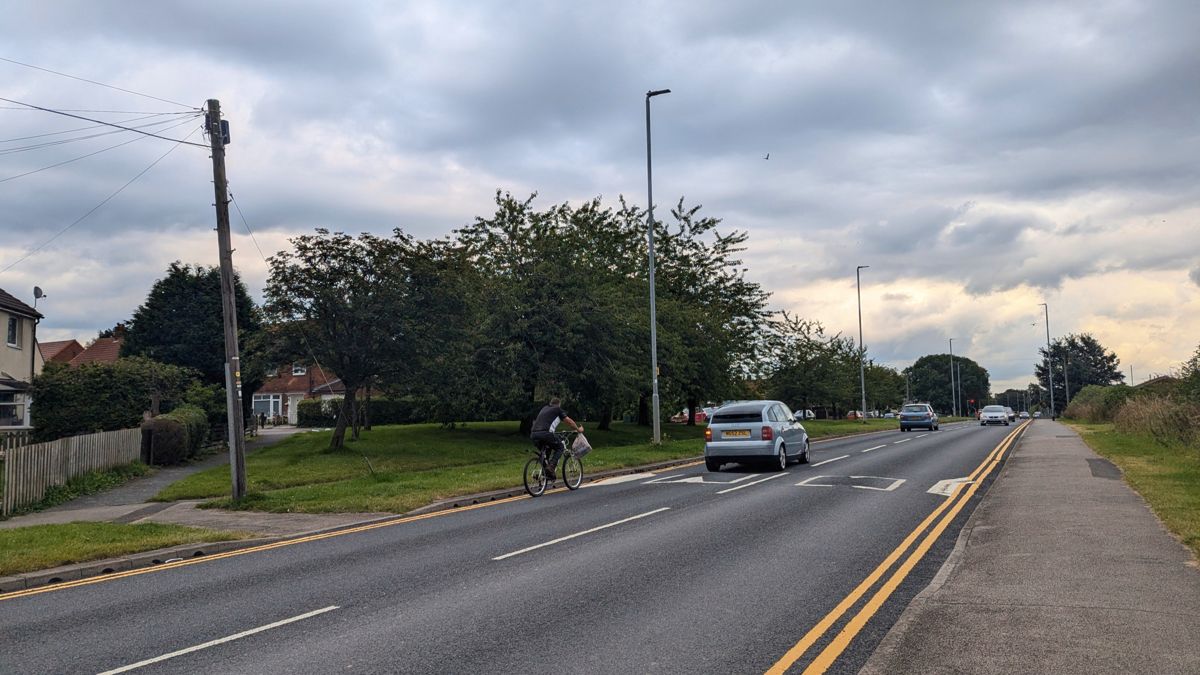Leeds City Council is launching a £1.9 million consultation to enhance active travel routes in Crossgates, focusing on safety and connectivity for walking, cycling, and wheeling. The plan includes new segregated cycle tracks, signalised crossings, and expanded footways to promote eco-friendly transport and support local schools and amenities.
What is the purpose of the public consultation for Crossgates active travel routes?
The public consultation aims to improve active travel around Crossgates by enhancing safety and connectivity for walking, cycling, and wheeling. With £1.9 million funding, the plan includes segregated cycle tracks, signalised crossings, and expanded footways to encourage environmentally friendly transport and support local schools and amenities.
Active Travel Initiatives in Crossgates
Connecting Leeds, an initiative aiming to bolster the transport network of the city, has launched a public consultation focusing on the Crossgates area’s active travel routes. The emphasis is on creating a safer and more health-conscious environment. The proposal seeks to facilitate walking, cycling, and wheeling* for short trips to schools, local shops, and to the heart of Crossgates itself. With £1.9 million in government funding earmarked for the project, the improvements target Barwick Road and extend to additional regions such as Swarcliffe, Manston, and the Poole Estate.
Feedback has illuminated some of the current travel difficulties in Crossgates, such as problematic road crossings and disjointed cycle paths. The proposal aims to combat these issues by enhancing connectivity for cyclists and simplifying road crossing, thereby ensuring the safety of all road users. The plan includes a series of infrastructural changes, such as the creation of segregated cycle tracks, signalised crossings, and expanded footways. One of the highlighted features is a two-way segregated cycle track along Barwick Road, which is meant to seamlessly connect with the existing City Connect route.
This advancement would be further complemented by the introduction of new crossings and the expansion of pedestrian pathways, which are vital for safe access to the region’s amenities. Moreover, the aesthetic of the neighborhood is poised to benefit from tree planting and the potential development of a pocket park along Farm Road. The modifications also address vehicle access issues to Swardale Green, offering residents a selection of three options for access changes.
Enhancing Community and Environmental Well-being
Leeds City Council is at the forefront of this sustainable development effort. Councillor Jonathan Pryor, the executive member for economy, transport, and sustainable development, stresses the importance of the scheme for local schools and the broader community. “There are a lot of local schools in the area, and we want to make doing the school run, or visits to local shops and amenities safer for everyone,” he states. The aim is to encourage more people to opt for environmentally friendly means of transport while making the area more approachable.
This initiative is expected to reshape the traditional vehicular-centric travel and place active transportation at the heart of local commuting. It’s a step towards a greener, healthier Leeds, recognizing the need to alter the urban landscape to accommodate and encourage active travel choices. As a reflection of these inclusive efforts, the scheme is a collaboration between Leeds City Council and the West Yorkshire Combined Authority, leveraging regional partnerships to achieve common goals.
Deputy chair of the West Yorkshire Combined Authority Transport Committee, Cllr Peter Carlill, also vocalizes his support, encouraging public participation. “We want to build a better-connected West Yorkshire by making it easier to walk, wheel and cycle in our communities,” he asserts. Carlill’s call to action for residents to engage with the ongoing consultation process is an essential part of ensuring that the scheme aligns with the community’s needs and preferences.
Participate in the Decision-Making Process
The consultation provides an avenue for residents, businesses, and visitors to contribute their perspectives and influence the scheme’s final design. The council has made available a 10-minute survey, which is easily accessible and allows for quick public input. The survey and additional information about the proposed changes can be found here, or by attending a scheduled drop-in event.
For those preferring traditional methods of communication, there is an option to obtain paper copies of the proposals and survey. Contact information has been provided, with a dedicated phone line (0113 336 8868) and an email address (connectingleeds@leeds.gov.uk) being established to facilitate these requests. The proactive approach taken to engage a wide demographic underscores the importance the council places on holistic community feedback.
*Note: Wheeling includes the use of wheelchairs, mobility scooters, walking aids, and the act of traveling with prams or pushchairs.
The scheme not only represents a significant shift towards improving the local infrastructure for active travel but also a tangible commitment to creating a more inclusive and sustainable future for the people of Leeds. Public engagement is essential in ensuring that the plans reflect the actual needs of those who live, work, and travel within the Crossgates area, and as such, the consultation process remains a cornerstone of the project’s potential for success.
- Leeds City Council has initiated a £1.9 million consultation to enhance active travel routes in Crossgates, focusing on safety and connectivity.
- The proposed improvements include new segregated cycle tracks, signalised crossings, and expanded footways to promote eco-friendly transportation.
- The initiative aims to create a safer environment for walking, cycling, and wheeling, facilitating short trips to local schools and amenities.
- Community feedback has highlighted current travel difficulties, prompting plans to enhance connectivity and ensure the safety of all road users.
- The consultation process allows residents and businesses to contribute their perspectives, with a 10-minute survey available for public input.
